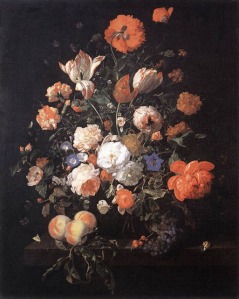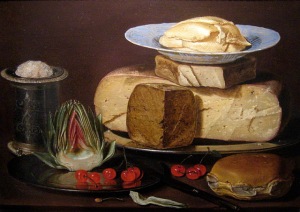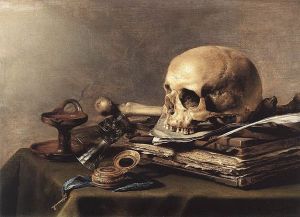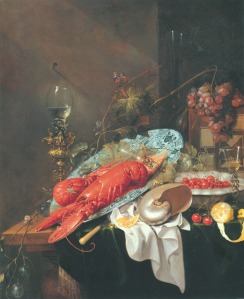Contemporary Dutch artists thought that ‘still life’ was too broad a term and instead they had sub-genres for the different types.
FLORAL STILL LIFE
In Dutch still life flowers were chosen for their symbolism, not for their appearance. Each flower had its own symbolic meaning, so no two flowers were the same. Rachel Ruysch is one of the most well known for this type of still life. She would include bee’s and butterflies within her painting to symbolize Christianity. The bee represented passion and its stinger referred to Christ’s crown of thorns. The butterfly represented the resurrection and the soul.
BREAKFAST PAINTING
Another genre within still life was of simple food typical of a Dutch meal, this was known as breakfast paintings. This type of painting became very popular in Haarlem. The food was shown against a dark background on a table using a monochromatic colour scheme. Clara Peeters was an artist that practiced this style of painting.
VANITAS PAINTING
In Latin Vanitas means vanity and Vanitas artists use it as a symbol of mortality. The Vanitas style became a popular style in the 1620’s and went from metaphorical to an allegory of death.
Some of the symbols used for Vanitas included: skulls, bones, extinguished candles and empty hourglasses. Pieter Claesz specialized in Vanitas painting.
BANQUET STILL LIFE
During the second part of the 17th century still life paintings became more elaborate and moved towards banquet paintings, it started to replace Vanitas painting in popularity. The Dutch enjoyed a higher standard of living and banquet painting represented the desire of the wealth and luxury of owning a still life.
Posted by EN



